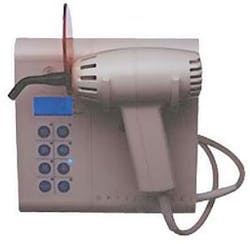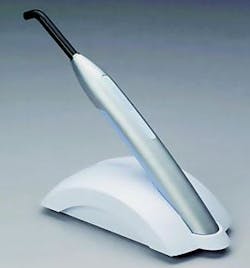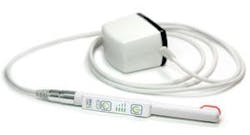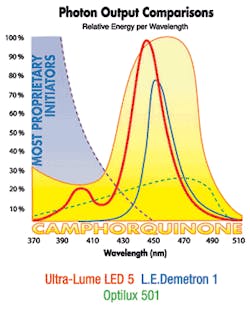Shop Talk: Curing Lights Have Feelings Too!
By Victoria L. Wallace, CDA, RDA
Well not really, but curing lights need to be paid attention and treated like your best friend would be treated! Curing lights help to make our lives successful. Just imagine if you would, the dental office without the curing light...oh my, can’t do it. If we didn’t have curing lights we wouldn’t have adhesive dentistry, and if we didn’t have adhesive dentistry; well let’s just go back to 1970...peace signs and tie dye! Oh and don’t forget the bright orange, yellow, and avocado dental chairs.
I would like to share some information with you to help you build that loving, caring relationship with your light that all dental assistants should have. Let’s first review the different types of lights available to dentists today.
QTH
Quartz-Tungsten-Halogen lights seem to be the most common light cure source in today’s dental practice. Not only have they been around since the 1970’s they are proven and relatively inexpensive.
Most commonly referred to as halogen, they are necessary for curing resins and have become a real work horse in dentistry. Halogen lights produce a blue light by passing current through tungsten filament contained in a quartz bulb which contains halogen gas. The light is reflected and then goes through filters producing a broad wavelength of light to cure resins. Due to the broad wavelength it also produces some extra heat, but always cures everything. Have you ever put the light guide on your fingernail...it is very hot very fast. Check it out.
The halogen lights also require maintenance. Bulbs degrade over time, lowering the output. The dental assistant should be using a curing radiometer to check the light periodically, especially if it is an older model. Newer models house a radiometer right in the unit, which is an excellent feature, as it is a constant reminder to check the light. The Optilux (trade mark)501 by sds Kerr is just one example. (Pic #1)
Halogen lights also have a fan to cool the unit. This is somewhat noisy and produces some vibration. The light guide must also be kept free of resin build up on the end. Either use a sleeve cover to protect the light guide or use some acetone to remove any residue that has formed. If you choose to utilize the light guide cover, please make sure it is pulled tight over the end of the light when curing. Light guides can break or fracture if dropped. And remember, light guides are autoclavable.
ShopTalk Tip:
It is a smart move to keep and extra light guide and an extra bulb in the office at all times. Also, try to remember not to turn off a halogen unit if the fan is still running. This will help to extend the life of the unit.
We’ve all used halogen lights, and couldn’t do dentistry without them, but unless maintained properly and output checked, they could be a source of sensitivity in your practice due to uncured resin.
PAC and LASER
As we rolled into the late 1990’s curing technology was revised. Dentists became very busy, and adhesive dentistry was the norm. Time was now an issue, and doctors wanted a faster cure. And they got it.
Plasma arc curing was introduced with a 3 second cure! Wow, what a time saver. They were “cool”, but not really. They also produced heat, which sometimes would make the patient jump if they were not anesthetized. This is something to be aware of when holding the pac light against a tooth that is not numb.
PAC lights have a lot of moving parts housed in a fairly heavy metal type box. Some have a handle so it can be moved easily from room to room. The cord to the wand houses fiber optics, with the newer models being more flexible than in the past. PAC lights are also very expensive, starting around $3000. PAC bulbs should last around 1000 hours. Good thing, as they cost around $700 to replace.
There were also some concerns with the first generation of PAC lights not curing all resins. The new models of PAC lights are said to cure everything, however, it is always wise for the dental professional to ask the light representative what the range of wavelength is when making the decision to purchase the light, in fact you should ask that when purchasing any new light.
LASER curing units also became very popular. Light amplification by stimulated emission of radiation, or as most of us know, argon laser. Excited ions in an argon filled chamber produce a light that is focused and passed through the hand piece. Great technology as the cure was fast and virtually no heat was produced. LASER curing units also had a very narrow output which sometimes did not cure all resins. They are also expensive and bulky.
We couldn’t live without LASER technology, but most clinicians choose not to use them for curing resins.
As technology progressed, so did the curing research. Output of curing lights always seems to be the concern, but as the research info came in, we were also informed that the wavelength produced by the light was of importance. Many new proprietary photo initiators only cured at certain wavelengths, which is at the low end of the light spectrum. As with all new technology, manufacturers made some adjustments to meet the needs of their customers.
LED
Now that you are up to speed on curing options, let’s talk about the future of curing. Like they say, “The future is now!”
Light emitting diode curing lights have many great features, which really benefit the dental assistant. Of course they benefit the clinician and the patient, but I am now looking at this as a dental assistant that is responsible for the equipment. I love the LED lights!
Let me explain my excitement.
LED curing lights use semiconductors that are subjected to electricity and produce a blue light. It’s as simple as that! Well, not really or we would have had them years ago. Sometimes it is best to keep it simple, so lets do that for now. The really great thing about the LED curing technology is that hardly any heat is produced, therefore they are kinder to the tooth and no fan is needed. No noise, no vibration, no waiting to turn it off. The patient doesn’t even know when the light is in the oral cavity.
Because the LED’s take less power to run, new battery operated models are available. They are easy to handle and easy to move from room to room. Most of the units are quite small compared to the other curing options. The cordless LED light sits in a base to be re-charged like the Elipar FreeLight 2 by 3M ESPE, (Pic #2)
If you chose not to worry about re-charging you may want to go with a corded unit like the UltraLume 5 from Ultradent. (Pic #3) Humanitarian groups love the size and convenience of the LED’s when traveling to remote areas to perform dentistry.
ShopTalk Tip:
Note to Doctor: make sure to buy more than one LED as everyone in the office will be fighting over them. No kidding! Trade shows are usually a great time to buy as many of the manufacturer’s will offer some type of show discount...yeah! Then you can get one for each operatory.
Checking the light with a curing radiometer is not as important as it is with a halogen light. I have been told that either the LED works or it doesn’t. The life span of the LED is in the thousands of hours...that is a lot of cure time. However, if you choose to be on the safe side and do decide to check the output, sds/Kerr makes the Demetron L.E.D. Radiometer that is calibrated specifically for light emitting diodes, as does Ultradent for the UltraLume 5.
Most of the manufacturer’s have a one to two year warranty. If you are purchasing a cordless unit, the batteries are usually lithium. Lithium batteries are more expensive, but last longer and are more environmentally safe. Also note that the warranty on the battery is usually only one year which is less than the unit itself.
The LED curing lights are very convenient, but still relatively inexpensive. Most of the lights range from $700 - $1500. Make sure to ask what the return policy is when making the purchase. Most companies will allow 30 days to return if not satisfied. Another option is to ask if the representative has a loaner that your office can try out for a day or two. Try before you buy...always a smart move.
Ok, so they are cute, convenient, and a must have. What about the wavelength of the LED’s?? Good question. Let’s go back to new technology. When something new is released, there may be some glitches, or bugs that need to be worked out. Nothing is perfect, and this is how the real world works. So when you find a problem, you research it and solve it, right? When the first generation of LED lights came out, we were all excited. However, some brilliant minds asked some good questions and realized that once again some of the photo initiators weren’t being polymerized, primarily photo initiators other than the traditional camphorquinone. So the manufacturers went back to the drawing / wavelength board to make the new LED technology work. However, the research is still taking place so please check out the wavelength picture and know that many of the new 6th and 7th generation bonding resins cure at the low end of the spectrum...between 370 -420ish. Camphorquinone cures around 456 as the peak shows on the graph. (Pic #4) Do the research; ask about the peaks for curing the products you use in your office. Your representative should have the answer for you. Try it out, but don’t forget about the oxygen inhibition layer we talked about in a previous article. When you cure, there is the oily layer on top. The sales rep should know the wavelength of their LED light, and should be able to provide you a list of products that it may not cure.
I also love the way they feel in the hand...some are as light as 4 ounces, and very easy to move around in the mouth. Do be careful if you get one that has a light guide and is completely round with no cord...they can roll off the counter or the cart and hit the floor, sometimes breaking the guide. (Opps!)
Check with the manufacturer of the LED light you choose when it comes to using it for procedures such as in-office whitening that require long periods of constant exposure. Some recommend that you don’t use the LED in that manner.
ShopTalk Tip:
Please remember you get what you pay for...don’t make the final light decision solely on the price. Lights are investments that will pay you back more than you think. Pennies per cure...
You will hear more and more about LED’s in everyday life. You see them used in so many applications from car head lights, traffic signals, clocks, fun flashing pens, you name it. LED’s are a great step ahead in technology as they use a lot less energy and last a long time.
Next time your office is in need of a new curing unit, take some time to investigate the advantages of LED.
The time you save in maintenance, and the convenience of moving them from room to room will make it a smart investment.
In the meantime, treat your curing lights, whatever you use, with some little extra TLC. They do a lot of us and for dentistry. Like any piece of equipment, the better you treat it, the longer it will do a great job for you.
Until next time...
Have fun, be safe, and never stop Smiling!
Biographical Sketch
Victoria L. Wallace has been a CDA, RDA since 1976. Her chairside career included general dentistry, and cosmetic/esthetic dentistry.
Since 1996, Wallace has been employed by Ultradent Products, Inc. She currently works with the West coast and Nebraska dental schools and residency programs. She lectures and gives hands-on programs nationwide with a focus on adhesive dentistry and tooth whitening.
Wallace is an active member of the ADAA, president of the Nevada DAA, and serves as a director for the ADAAF.




